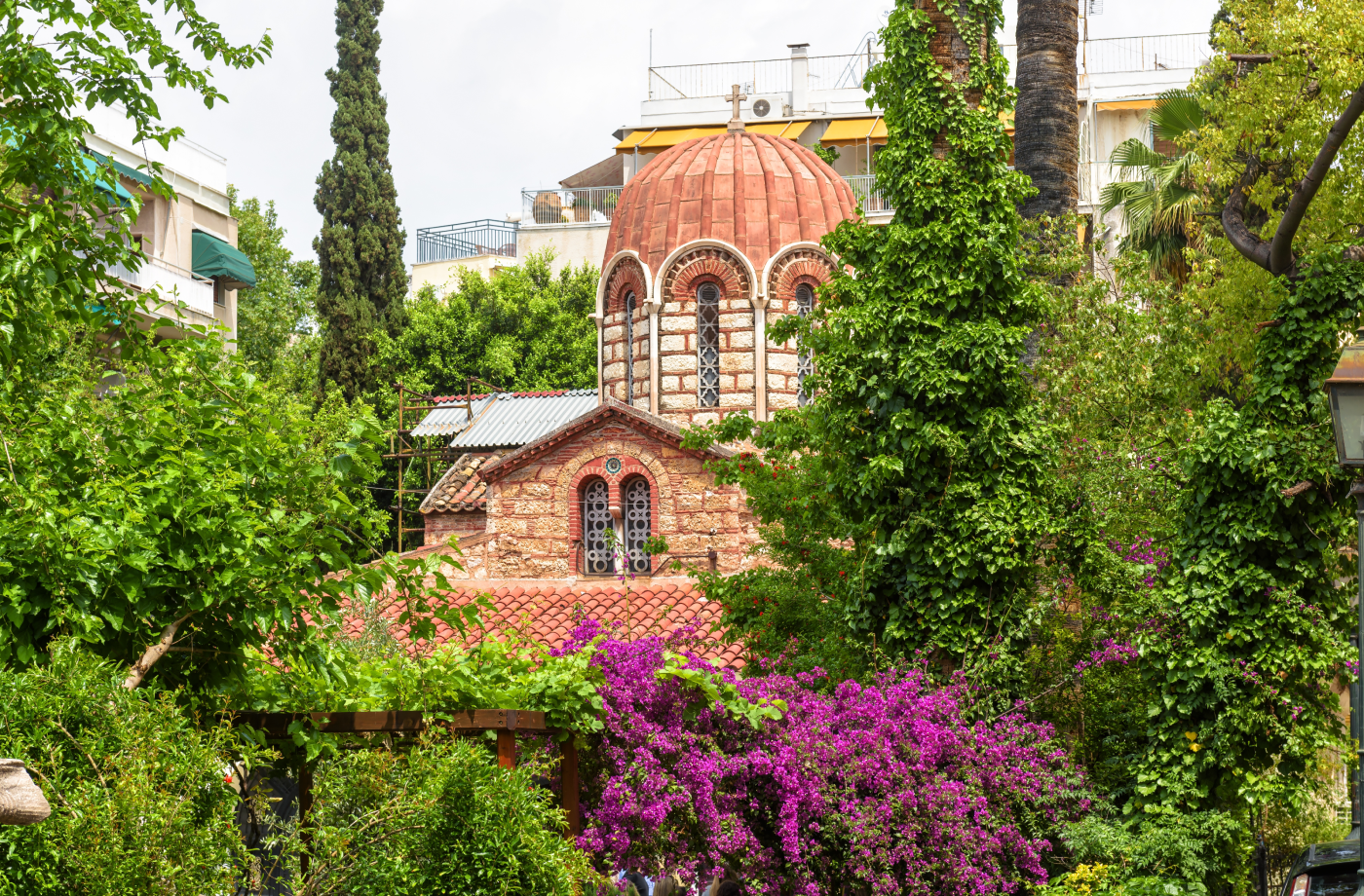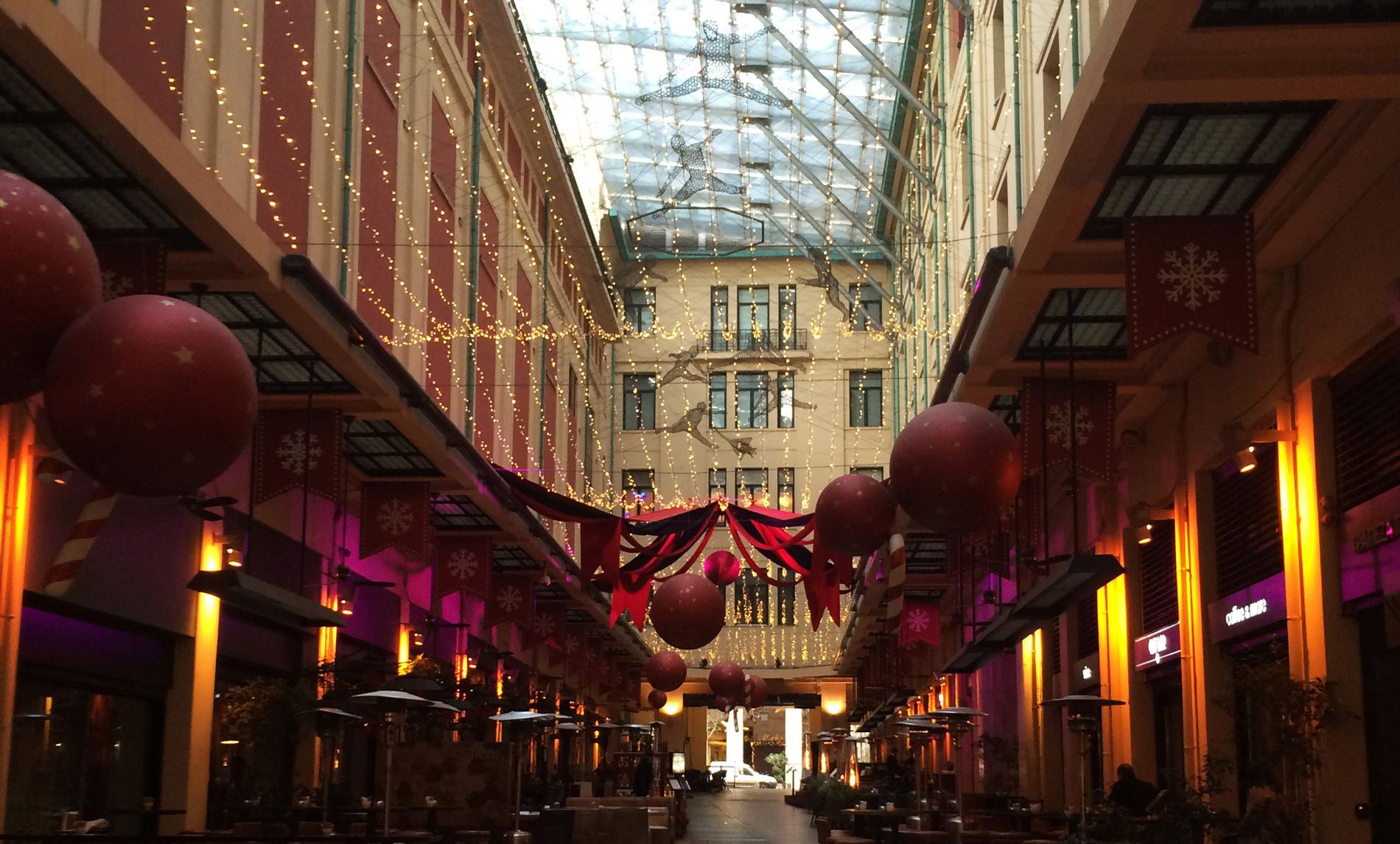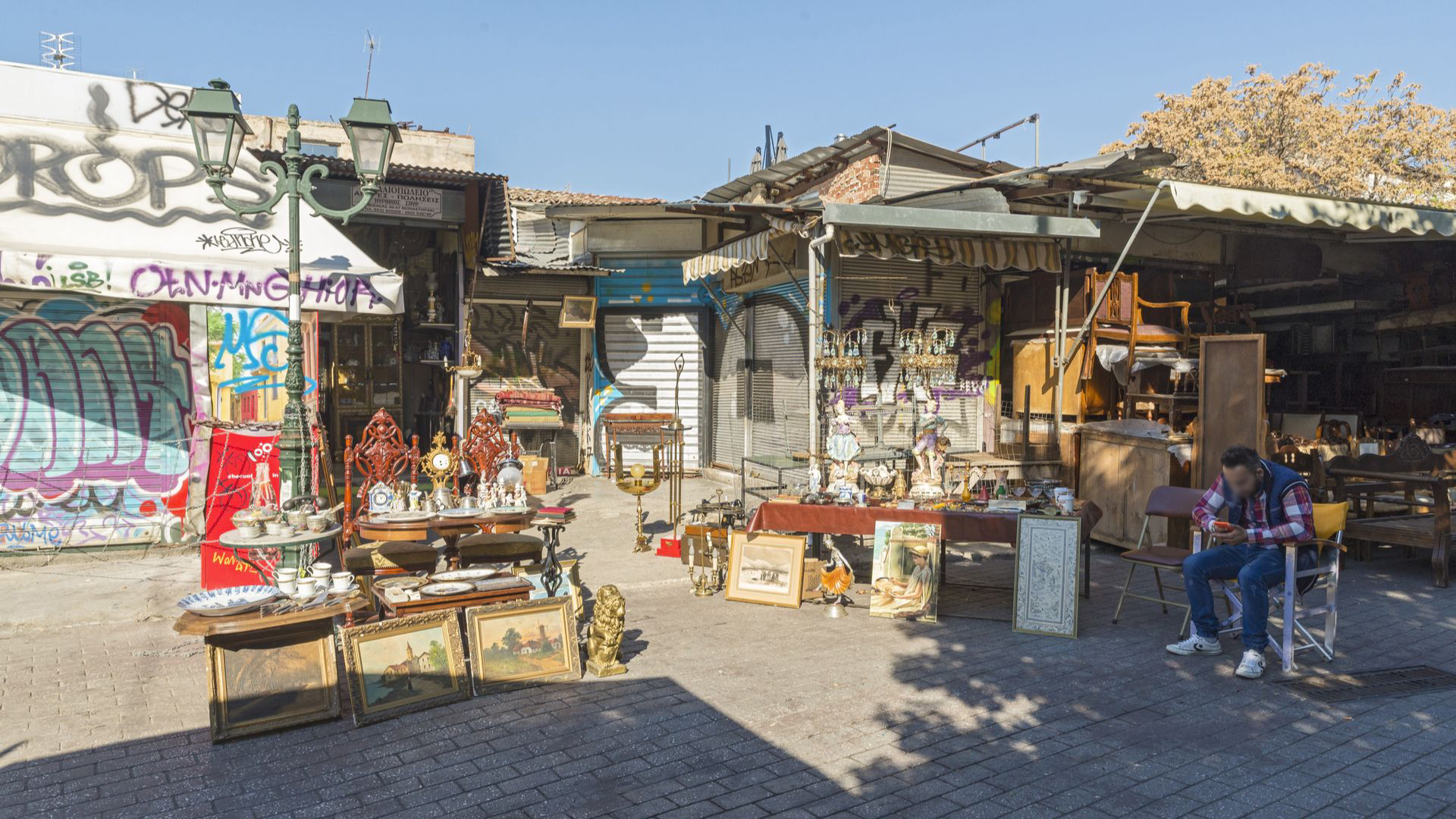Monastiraki Metro Station- Eridanos River
Monastiraki Metro Station- Eridanos River
Monastiraki metro station is historical and one of the oldest on the Piraeus-Kifissia line. It was inaugurated on May 17, 1895 and is, together with the original Omonoia station, the second oldest station of the center, after the Thission station, which was inaugurated twenty-six years earlier, in 1869, as well as the terminal station of Piraeus. The station had the original official name of the area, “Monastirion”, something that can still be seen by reading the signs on the platforms. More than a century later, on April 22, 2003, the corresponding station of the “Metro Line 3” (Blue Line) Egaleo – Ethniki Amyna (National Defense)/Airport was inaugurated on the ground floor. Today, the two stations form one of the main rail networks of the center. The station was part of the first extension of the original steam railroad connecting Piraeus to Athens, although the line was eventually electrified in 1904. The extension started at the Thission terminal, continued on the surface along the ancient Agora to Monastiraki, and then through an underground tunnel to the original Omonia station, located northeast of the City Hall building. The neoclassical entrance building to Monastiraki Station was designed by architect Nikolaos Balanos, who was one of the engineers who designed the underground tunnel that connected Monastiraki to Omonia.
Right next to the building of the Electric Railway Station, on Hephaestou Street, is the starting point of the flea market with dozens of shops and antique stores, the “Dimopratirio”, according to the sign at the beginning of the street. The flea market is a constant attraction and a classic point of reference not only for tourists and visitors, but also for Athenians themselves. Pearls, handmade jewelry, leather and military items, old furniture, clothes and antiques are just some of the things you can find at the Monastiraki market. The same goes for the Pandrossou Street market, Areos Street opposite the columns of Hadrian’s Library, and of course Abyssinias Square with its dozens of antique shops, which is another picturesque and characteristic place of the Monastiraki area. The Association of Antique Dealers of Athens and Surroundings was founded in 1922 and its first president was Noah Yussuroum, a merchant of Jewish origin. Another unofficial but well-known name for Abyssinia Square is “Yussuroum”, after the Jewish antique dealer who had his shop there.
The works for the construction of the metro station brought to light a part of the bed of the Eridanus river and with it pieces of the history of Athens, since the archaeological findings are closely linked to the historical past of the city over the centuries and reflect aspects of life and the state of the capital in various and different periods of its history.
The findings around the bed of Eridanus belong to different eras and historical periods, which means that the area was particularly important, it was always inhabited and perhaps, in a different way and from a different point of view, it had that very special atmosphere that characterizes it today.
Marble sculptures, pieces of buildings, mosaic floors, frescoes, vases, coins – give the mark of the different historical eras that the area lived, but also the historical center in general, while the kennels, the building line and a building belonging to the classical period, the semi-cylindrical dome of the time of Hadrian, part of a Roman road, a building of the Roman period, as well as an early Christian building.
The Eridanos River flowed from Lycabettus Hill, passed under the present National Garden, descended Mitropoleos Street, reached Monastiraki Square, crossed the Kerameikos Valley, where a part of it seems to have reached Piraeus Street, and somewhere there turned south and joined Ilissos. It had a continuous flow that increased when it rained a lot and often even flooded. The historian Strabon mentions that the river had nine springs, the main one being the Panopos Fountain, northwest of Syntagma Square, opposite the Gate of Diochares, at the junction of today’s Voulis and Apollonos Streets. References to Eridanos are found in “Batrachomyomachia”, the famous parody of the Iliad, but also in Pausanias and Callimachus.
In ancient times, the Eridanos River was the main axis around which houses were built in the area. The building line was defined by two paths, north and south, while buildings were built on both sides. Later, by order of Hadrian, the river was covered with a brick dome and turned into a canal. Today, after the renovation of Monastiraki Square and its inauguration in December 2008, its part above the bed of Eridanos has remained open, fenced with a metal railing so that passers-by can see part of the riverbed from above, while around this opening, between the simple tiles of the square, tiles with symbols mainly of water and the sea, as well as a wavy white line, symbolically delineating the position of the river below, have been placed. An open part of Eridanos is located at the archaeological site of Keramikos and finally at the Syntagma metro station, where part of the ancient riverbed is exposed and displayed.








